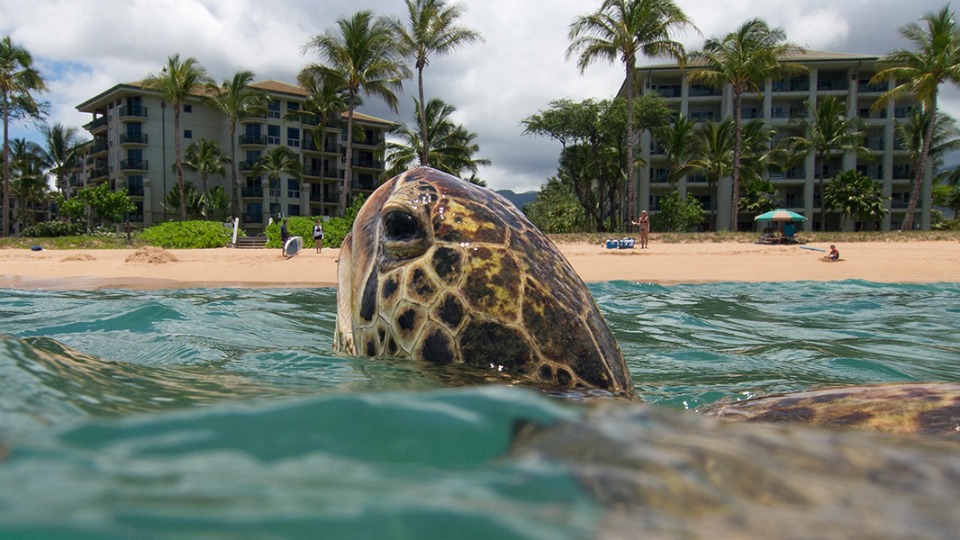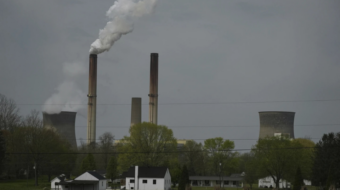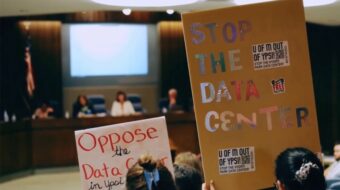
Clean water activists and environmental groups are celebrating a federal court victory in Hawaii that will force a Maui County wastewater treatment plant to stop a dumping practice that has endangered fragile marine environments for decades. The win has national repercussions, however, as it sets a new precedent for how pollutants that threaten waterways can be discharged.
On July 15, U.S. District Judge Susan Oki Mollway ordered the Lahaina Wastewater Reclamation Facility in West Maui to seek a Clean Water Act permit for injection wells it operates. The discharge wells dump treated sewage directly into groundwater, which then makes its way via subsurface flow into the waters off Kahekili Beach, just half-a-mile away. The area is popular with snorkelers and surfers and is considered part of a delicate sealife ecosystem.
The decision instructs the government of Maui County, which owns the plant, to seek a permit required under the Clean Water Act for dumping polluted water into the ocean, a document called a National Pollutant Discharge Elimination System (NPDES) permit. The ruling holds nationwide importance because it is the first legal test of an earlier Supreme Court finding that pollutants reaching surface waters via groundwater require the same kind of testing and permitting as those deposited directly into waterways.

Despite admitting that up to five million gallons of treated sewage per day was being flushed down the injection wells and eventually reached the ocean, the County claimed it didn’t need a permit to dump the waste because it was not being directly discharged into a waterway.
Lawyers for environmental law firm Earthjustice argued otherwise and fought a nine-year legal battle to stop the County. The case was brought on behalf of a coalition of groups including the Hawai’i Wildlife Fund, the Sierra Club – Maui Group, Surfrider Foundation, and the West Maui Preservation Association.
Judge Mollway found the submissions so compelling that she did not even allow the matter to go to trial, choosing instead to issue a summary judgment for the plaintiffs, Earthjustice and its clients.
In her decision, Mollway wrote: “Anyone who proposed to stand at the shoreline and empty directly into the ocean each day thousands of large drums filled with pollutants would be required to get…an NPDES permit under the Clean Water Act.”
Then, citing testimony from experts and data showing the treated sewage dumped into the aquifer inevitably flows to the sea, Mollway restated the Supreme Court’s finding that “discharge into the groundwater below the [plant] is functionally equivalent to a discharge into the ocean itself.” She ordered the County to seek the required permit from the Environmental Protection Agency.
David Henkin, the senior attorney at Earthjustice who argued the case before the Hawaii District Court as well as the Supreme Court last year, said via press release that the win against Maui County was “a victory for clean water, for justice, and for common sense.” Referencing the decisions, he said, “[P]olluters cannot evade the Clean Water Act by using groundwater as a sewer to convey pollution into our nation’s waters.”
Earthjustice has referred to the Hawaii battle as “the clean water case of the century,” and Hankin believes the outcome is a major boost to communities “fighting to protect their rivers, lakes, and oceans from pollution via groundwater—from Hawai’i to New York and from Alabama to Montana.”
The list of losers in the case goes far beyond just Maui County, however. The offloading of environmental damage costs onto communities is a key component of the profit model for many companies, especially in the oil, gas, and mining industries.
That’s why Maui County’s efforts to gut the Clean Water Act were backed by several business interests, including pipeline company Kinder Morgan, Energy Transfer Partners (the company behind the Dakota Access Pipeline), the American Fuel and Petrochemical Manufacturers group, the National Mining Association, the U.S. Chamber of Commerce, agribusiness concerns, and others.
The ruling is also a rebuke to the position taken by the Trump administration that parroted industry claims that the Clean Water Act didn’t cover pollutants dumped into the ground—a reversal of over 40 years of EPA policy.

An appeal by Maui County is still possible, though the court decisions issued thus far suggest it would not likely prevail. Under settlement terms originally negotiated six years ago, the County will be required to not only get the NPDES permit but also spend $2.5 million to make treated wastewater useful by diverting it to aid irrigation in dry areas of West Maui.
If the County’s position—and that of other big polluters and the Trump government—had prevailed, it would have created a roadmap for evading regulation. As Justice Stephen Breyer implied in last year’s hearing, polluters might just cut their discharge pipes five feet from shore and claim they’re dumping into the ground rather than a body of water. That possibility is blocked, for now.
The Hawaii decision holds the possibility of impacting future legal battles around the water contamination via sources such as leaking pipelines, fracking operations, coal ash ponds, factory farm manure lagoons, and drilling site tailing ponds. And that means clean water advocates nationwide have the wind at their backs.










